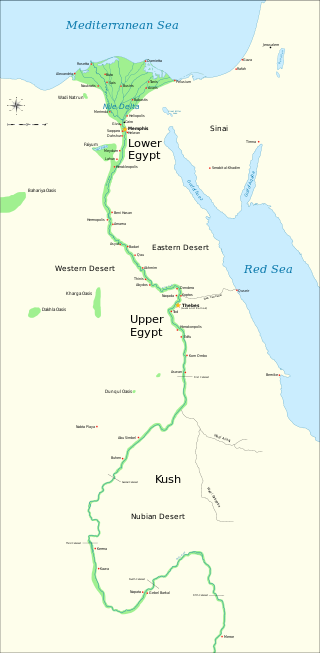
The First Intermediate Period, described as a 'dark period' in ancient Egyptian history, spanned approximately 125 years, c. 2181–2055 BC, after the end of the Old Kingdom. It comprises the Seventh, Eighth, Ninth, Tenth, and part of the Eleventh Dynasties. The concept of a "First Intermediate Period" was coined in 1926 by Egyptologists Georg Steindorff and Henri Frankfort.

Usermaatre Akhenamun Ramesses VIII or Ramesses Sethherkhepshef Meryamun, was the seventh Pharaoh of the Twentieth Dynasty of the New Kingdom of Egypt, and was the 9th of the 10 sons of Ramesses III.

Sehertawy Intef I was a local nomarch at Thebes during the early First Intermediate Period and the first member of the 11th Dynasty to lay claim to a Horus name. Intef reigned from 4 to 16 years c. 2120 BC or c. 2070 BC during which time he probably waged war with his northern neighbor, the Coptite nomarch Tjauti. Intef was buried in a saff tomb at El-Tarif, known today as Saff el-Dawaba.

Wahankh Intef II was the third ruler of the Eleventh Dynasty of Egypt during the First Intermediate Period. He reigned for almost fifty years from 2112 BC to 2063 BC. His capital was located at Thebes. In his time, Egypt was split between several local dynasties. He was buried in a saff tomb at El-Tarif.

The area of the Valley of the Kings, in Luxor, Egypt, has been a major area of modern Egyptological exploration for the last two centuries. Before this, the area was a site for tourism in antiquity. This area illustrates the changes in the study of ancient Egypt, beginning as antiquity hunting and ending with the scientific excavation of the whole Theban Necropolis. Despite the exploration and investigation noted below, only eleven of the tombs have actually been completely recorded.
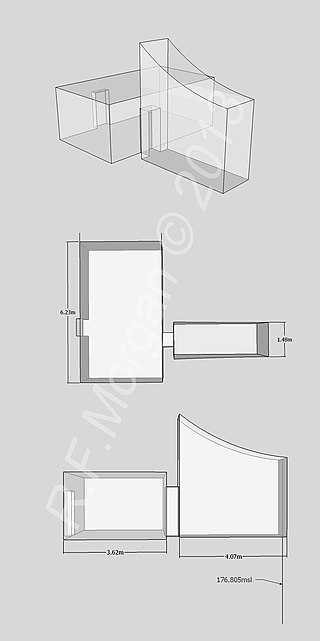
Tomb KV28 is an ancient Egyptian tomb located in the Valley of the Kings in the Theban Necropolis in Upper Egypt. It consists of a short shaft leading to a single rectangular chamber. It has been known since the 1830s as it is mentioned by John Gardiner Wilkinson. It 1889 Eugène Lefébure said it contained parts of mummies and their bandaging. The tomb was excavated in the 1990s by Donald P. Ryan who found the bones of three individuals, fragments of a limestone canopic jar, numerous wooden fragments, and early to mid Eighteenth Dynasty pottery. The occupants were possibly nobles, given the tomb's proximity to the tomb of Thutmose IV.

The Valley of the Kings, also known as the Valley of the Gates of the Kings, is an area in Egypt where, for a period of nearly 500 years from the Eighteenth Dynasty to the Twentieth Dynasty, rock-cut tombs were excavated for pharaohs and powerful nobles under the New Kingdom of ancient Egypt.

Rekhmire was an ancient Egyptian noble and official of the 18th Dynasty who served as "Governor of the Town" (Thebes) and Vizier during the reigns of Thutmosis III and Amenhotep II, circa 1400 BCE. He was the nephew of Vizier User, who took office at the time of the fifth year of Queen Hatshepsut’s reign. User's official titles included mayor of the city, vizier, and prince. Rekhmire is noted for constructing a lavishly decorated tomb for himself in Sheikh Abd el-Qurna, part of the Theban Necropolis, containing lively, well preserved scenes of daily life during the Egyptian New Kingdom. His tomb is also important as it contains a full copy of a text detailing the duties of the office of the vizier, known as the Installation of the Vizier.

The Book of Caverns is an important ancient Egyptian netherworld book of the New Kingdom. Like all other netherworld books, it is also attested on the inside of kings’ tombs for the benefit of the deceased. It describes the journey of the sun god Ra through the six caverns of the underworld, focusing on the interaction between the sun god and the inhabitants of the netherworld, including rewards for the righteous and punishments for the enemies of the worldly order, those who fail their judgment in the afterlife. The Book of Caverns is one of the best sources of information about the Egyptian concept of hell.
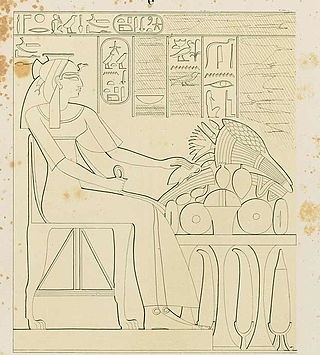
Duatentopet or Tentopet was an ancient Egyptian queen of the 20th Dynasty, the wife of Pharaoh Ramesses IV, and mother of Ramesses V. Even though the identity of Ramesses IV's wife has not been clearly stated in history, she is considered the most likely candidate by virtue of the titles she was given and which were found listed in her tomb (QV74).

Nakht was an ancient Egyptian official who held the position of a scribe and astronomer of Amun, probably during the reign of Thutmose IV of the Eighteenth Dynasty. He was buried in the Theban Necropolis in tomb TT52.
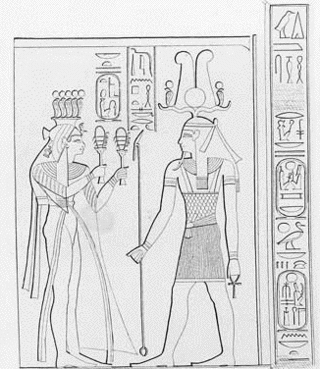
Iset Ta-Hemdjert or Isis Ta-Hemdjert, simply called Isis in her tomb, was an ancient Egyptian queen of the Twentieth Dynasty; the Great Royal Wife of Ramesses III and the Royal Mother of Ramesses VI.
Lyla Pinch Brock is a Canadian Egyptologist, specializing in epigraphy. She lives in Saissac, France.

A necropolis is a large, designed cemetery with elaborate tomb monuments. The name stems from the Ancient Greek νεκρόπολις nekropolis, literally meaning "city of the dead".
Nebetnehat was an ancient Egyptian queen consort during the mid-18th Dynasty. She was the Great Royal Wife of an unidentified pharaoh. Her name is only known from an alabaster canopic fragment found in the valley of the Queens. The canopic jar was part of a find referred to as the Tomb of the Princesses.
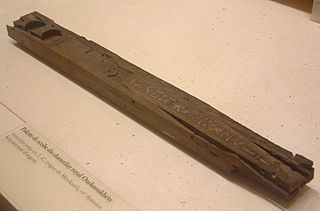
Merikare was an ancient Egyptian pharaoh of the 10th Dynasty who lived toward the end of the First Intermediate Period.
Purportedly inspired by the teaching of his father, he embarked on a semi-peaceful coexistence policy with his southern rivals of the 11th Dynasty, focusing on improving the prosperity of his realm centered on Herakleopolis instead of waging an open war with Thebes. His policy was not rewarded, and shortly after his death his kingdom was conquered by the Theban Mentuhotep II, marking the beginning of the Middle Kingdom. The existence of his pyramid has historically been ascertained, although it has not yet been discovered.
Amenemipet called Pairy was a Vizier of ancient Egypt. He served during the reign of Amenhotep II and Tuthmosis IV.
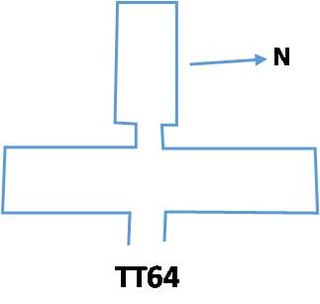
The Theban Tomb TT64 is located in Sheikh Abd el-Qurna. It forms part of the Theban Necropolis, situated on the west bank of the Nile opposite Luxor. The tomb is the burial place of the ancient Egyptian Hekerneheh, who was a King's Tutor of Prince Amenhotep during the reign of Tuthmosis IV and lived into the reign of Amenhotep III in the Eighteenth Dynasty.

The Theban Tomb TT282 is located in Dra' Abu el-Naga', part of the Theban Necropolis, on the west bank of the Nile, opposite to Luxor. It is the burial place of the ancient Egyptian Nakhtmin, also called Nakht, who lived during the reign of Ramesses II of the 19th Dynasty.















